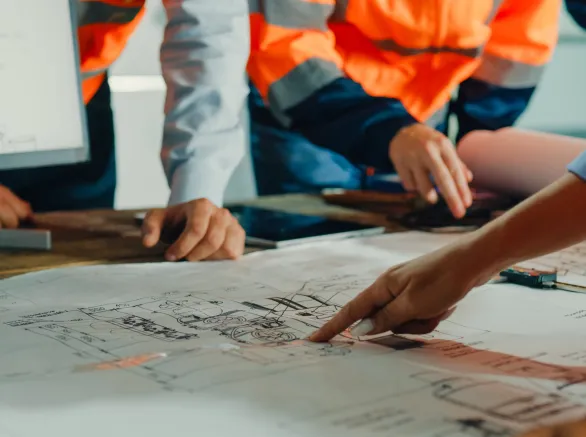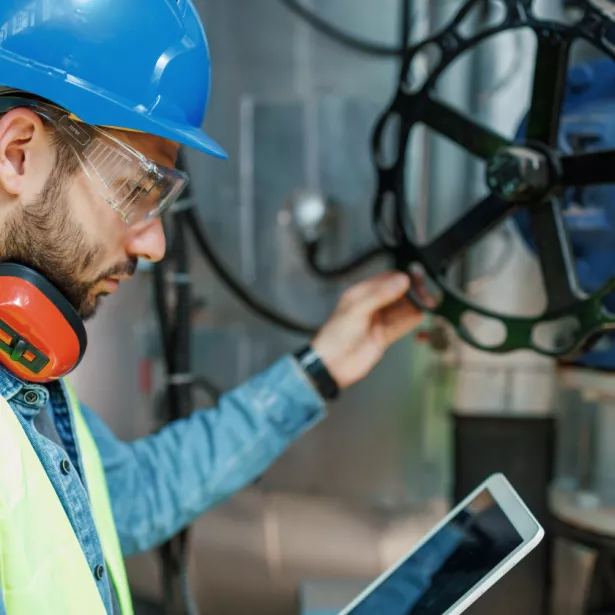March 17, 2022
New, complex disputes are on the horizon in international arbitration
The impacts of COVID-19 on large construction projects have mirrored those experienced by other industries — stalled projects, supply chain delays, dramatic shifts in workforce availability, and restrictions on travel — yet construction companies have risen to the challenge.
The pandemic helped push rapid digital transformation and technology initiatives, with many businesses implementing online contracts, clauses, and recordkeeping; virtual credentialing and trainings; site inspections via drone; and more. The construction industry has also already begun to address the initial wave of claims arising from COVID-19 related to top-line issues such as subcontractor payments for workers affected by illness and site shutdowns. All this in addition to the heavy costs of sanitization, testing, transport, and social-distancing protocols for multinational teams.
Nevertheless, new hurdles are coming into view. Engineers and project control teams are beginning to experience a "second wave" of pandemic-related impacts that will soon cross the desks of attorneys and arbitrators — and inevitably start heading toward alternative dispute resolution (ADR) processes, including international arbitration.
On large construction projects, particularly "megaprojects" (those with billion-dollar-plus budgets), the inherent complexity of disputes is increasing, and the resulting issues are likely to prove even more difficult for stakeholders and their counsel to disentangle.
Labor shortages & supply chain challenges, continued…
The labor shortages and supply chain challenges brought on by COVID-19 created immediate consequences for large construction projects, but their impacts will last exponentially longer. Some issues may not even be evident until projects reach the commissioning phase.
Considering that many large projects require several years to complete, and that the average (pre-COVID-19) arbitration in 2020 took 26 months to resolve, the pandemic could figure into disputes and ADR processes for more than a decade to come.
Resolving the cases now surfacing will also require a unique approach to analyzing and distinguishing between which delay factors or project errors are related to COVID-19 and which are not.
Take the example of a welding company subcontracted to work on an undersea pipeline before COVID-19 that was subsequently prohibited from entering the country due to travel restrictions. Faced with a full stop of the project for an unknown period, the project owner decided to bring in a different, local welding team without the same level of experience. When the pipeline welds were later evaluated for post-fabrication quality assurance/quality checking, numerous repair welds were required, leading to substantial delays and costs.
Was the need for extensive repair welding the result of using a less experienced subcontractor who purportedly adhered to project welding procedure specifications (WPSs) and used appropriately qualified welders? Or was there evidence of welding operations deviating from the approved WPSs?
In this new post-COVID-19 reality, quantum and delay analysts, engineers, legal teams, and arbitrators will need to look back at a period of potentially several years to parse which issues (or portions of issues) are potentially attributable to the subcontractor's performance and which are due to labor shortages caused by COVID-19.
The same type of quandary can also be applied to supply chain challenges. Materials substituted during COVID-19 perceived as "replacement in-kind" may have unintended impacts on the mechanical integrity of facilities and equipment. In such cases, was the material selection at fault? Or was it the lack of available materials of appropriate quality due to COVID-19? Or were there other, more complex factors that led to a lack of mechanical integrity?
The knock-on effect
Circumstances like those described above will only complicate decision-making for project teams and create a domino effect throughout the fabrication, construction, and commissioning phases. Ultimately, the owners/operators who take over a construction project and transition it into service will bear the lion's share of consequences for the choices, trade-offs, and other factors brought on by COVID-19. In some industries, impacts can add up quickly — not all of which are easily remedied by financial reparations.
For instance, in the marine industry, the purpose of a project might be to meet statutory environmental legislation with defined enforcement dates, such as the International Maritime Organization's ballast water management convention or regulations to reduce sulfur emissions.
Preparing a budget that allows for elements such as revenue loss, performance loss, the need for ongoing repairs, and increased operating costs is complex, but possible. However, unprojected, latent COVID-19-related complications like erroneous quality control could lead to consequences with true "costs" that are much harder to resolve, including added pressure on workers, increased risk to the environment, reduced asset value, and associated brand reputation damage.
Quantum and delay analysis of the future
Quantum and delay analysts will play a critical role in bringing clarity to the impacts of COVID-19 on project costs and schedules in the years to come. Using benchmarking or comparative studies is one opportunity to investigate the relative contributions of COVID-19 to incurred project costs and delays.
In the case of the welding subcontractor and the undersea pipeline, a deep dive into the frequency of repair welding on similar pipelines before COVID-19 could shed light on whether the work was subpar or impacted by labor shortages — or whether the quality of work was consistent with that typically encountered on comparable projects.
Similarly, for delayed construction projects that started before COVID-19 and resumed under new COVID-19 work protocols, conducting analyses on the issues that hindered progress pre-pandemic could help indicate which portion of delays are related to COVID-19 and which are not, enabling a more reasonable allocation of delays and costs.
How Exponent Can Help
Exponent's multidisciplinary experts are uniquely positioned to provide our construction and infrastructure clients with a diverse set of quantum and delay and engineering services. We offer independent, objective advisory support for all facets of claims and disputes, as well as expert testimony and litigation advisory support for ADR and international arbitration processes. Our services include determining whether a claim is worth pursuing; identifying the correct approaches or methodologies for quantifying physical damages; preparing and analyzing cost overruns and schedule delays; evaluating claims in the context of past and future damages incurred; and identifying the exact type of expertise, evidence, and documentation required. We work with many sectors of the industry including construction owners, lending agencies, engineering and construction contractors, subcontractors, designers, legal firms, and insurance carriers.
What Can We Help You Solve?

International Dispute Resolution
For over 50 years, Exponent has provided independent, objective expert advice to clients involved in dispute resolution all over the world and in disputes acros...

Materials & Corrosion Engineering Expertise for Disputes
Technical scientific support for disputes involving materials and corrosion.

Disputes
Get an independent, expert opinion for understanding challenges based on science, evidence, and data.
Insights



